
This past Saturday, as I said, was World Migratory Bird Day for about 21% of the world, including this portion, but I regrettably did not get out to do anything appropriate. I decided to try and make up for this on Wednesday and went down to Jordan Lake, the closest location with the greatest variety of birds. It wasn’t enormously active that day, but I managed a few frames here and there.

Off in the distance on the quiet waters, I could see a female double-crested cormorant (Nannopterum auritum) hanging out, and by waiting for a minute I was able to catch the kayaker passing behind her. They’re not that close together, really – this is telephoto compression, and the other boater even further off back there is likely over a kilometer beyond.
There was just the barest proof of the two typical species found down at the lake, the osprey and the bald eagle, but nobody wanted to perform for me or even draw within a couple hundred meters. Psshhfff.
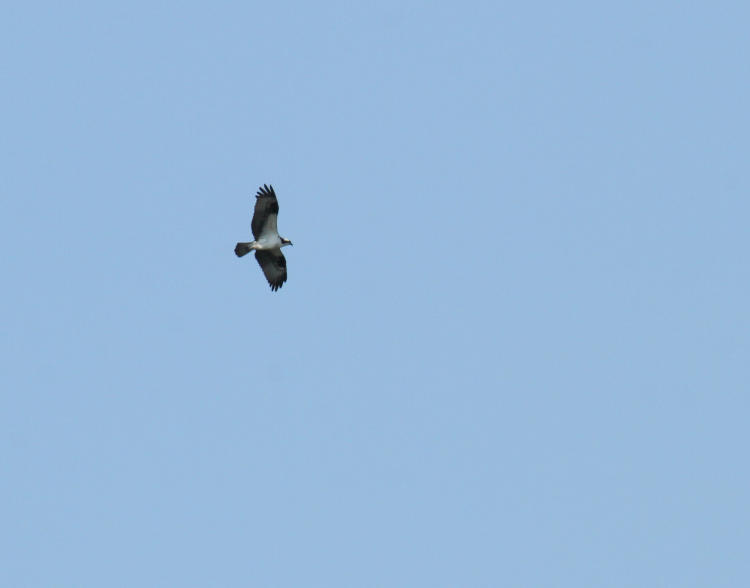
A lot of this may be due to it being nesting season, with the female sitting on eggs and thus the male gathering food only as needed, but otherwise helping to stand watch. Or it may simply have been the time of day, since I was out there later in the morning than intended. So the osprey (Pandion halietus) above, and the bald eagle (Haliaeetus leucocephalus) below appeared just enough to count, and nothing more.
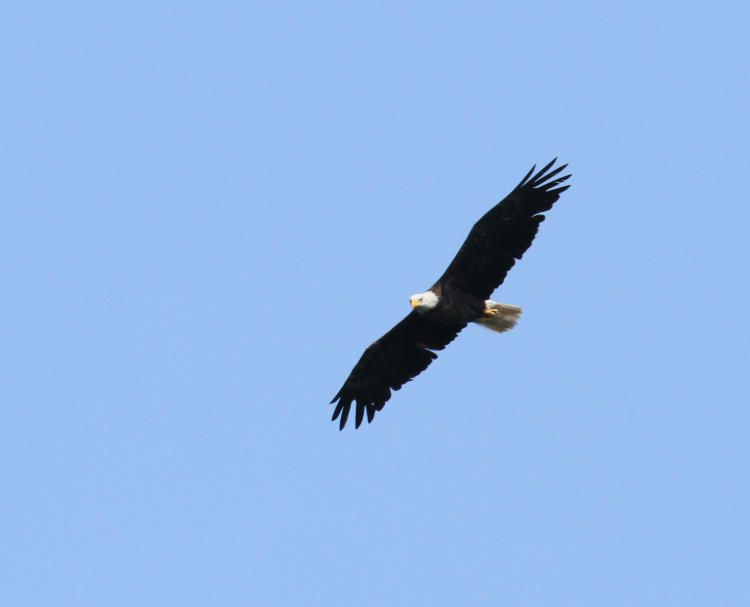
I noticed something in the viewfinder, and subsequent examination of the frames didn’t clear it up, but the tail of this one seems a bit ‘dirty,’ and I’m not sure if this is merely a trick of the light, or something actually staining the tailfeathers, or one other thing: the last remaining coloration of the juvenile phase, as the eagle molts out into adult plumage. Several of the photos show that molting is occurring, and the white head and tail don’t appear until the bird is four years old, so, maybe?
A red-headed woodpecker (Melanerpes erythrocephalus) put in an appearance.
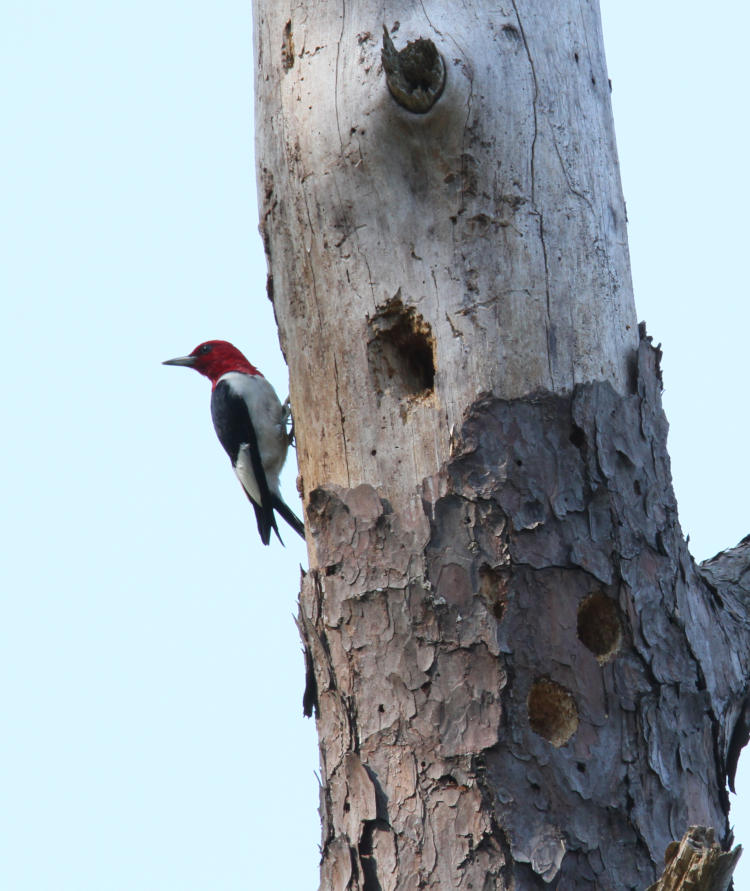
Obviously, this dead trunk is popular with at least one woodpecker in the area, but none of them were nest holes to my observation. That’s something that I’m still keeping an eye open for, and I should probably dedicate a few hours some day to combing the area, because I see this species most often along the lake. I need some images of woodpeckers feeding their young.
My wandering took me into an area where a flock of black vultures (Coragyps atratus) were feeding on dead fish, and they were reluctant to abandon the area. I felt a little bad about disturbing their meal, but knew they’d return in mere minutes, and truth be told, they didn’t go far off at all. I have enough black vulture images, but occasionally, I’m happy to add another.

This one was being notably suspicious, obviously hoping I’d turn around and head back the way I’d come, and I took advantage of the pose. I like the leg vein, and I can show you the head caruncles in much better detail if you like.
I offer a counterpoint to the red-headed woodpecker above with this red-bellied woodpecker (Melanerpes carolinus.)

This one put in a brief appearance while I was looking for the next subject, and hunted around for a nice crevice to put that nut in so it could crack it apart, but did not locate a suitable spot in my field of view.
I needed to check on the progress of the osprey nest we’ve been watching, and found a sentry out there once again.
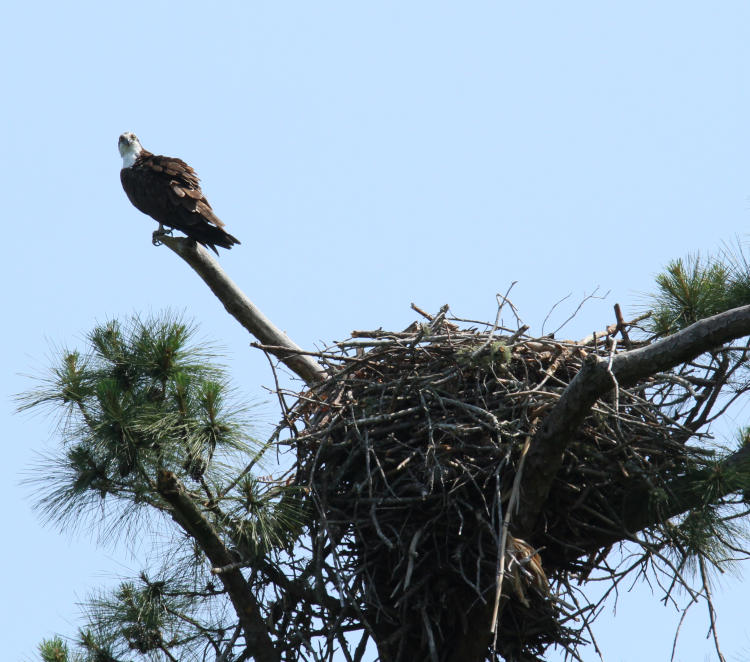
I think the last time we’d checked it out, there had been no sign of anyone. But some osprey calls in the right direction, with no birds visible nearby, led me to believe that it was occupied, and just unseen from this angle. So I took several shots of the nest this time to examine closely afterward, and something caught my eye.
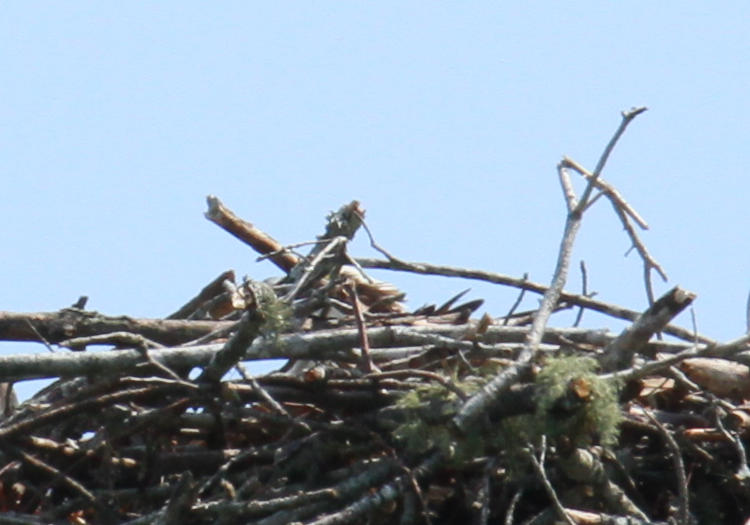
This is full-resolution, and right there in mid frame are things that don’t look like twigs and such – I was getting the impression of the feathers on the back of an osprey’s head, since they almost always stand out like a teenaged boy who thinks mousse is the trick. I couldn’t be sure, until I flipped back and forth between the last two frames that I had, which I’ve combined here in an animated gif (pronounced, “gis.”)

Yep – there’s someone sitting on this nest. Again, there won’t be much to see until the young are older and standing up pretty tall, but when that happens, this might lead to some decent pics. We’ll see.
As noted earlier, the osprey nest that had provided so many good opportunities last year was completely missing in February, and even though it was significantly farther down the lake, I drove down to check and see if any of the other, more distant nests were visible. And was delighted to see that my favorite had been rebuilt and was occupied.

This is great, because it’s visible from a nearby bridge, being only a few meters below nest level, and so the view of the young is halfway decent. I could do without the constant noise and vibrations from the passing cars, but hey, I’ll take what I can.
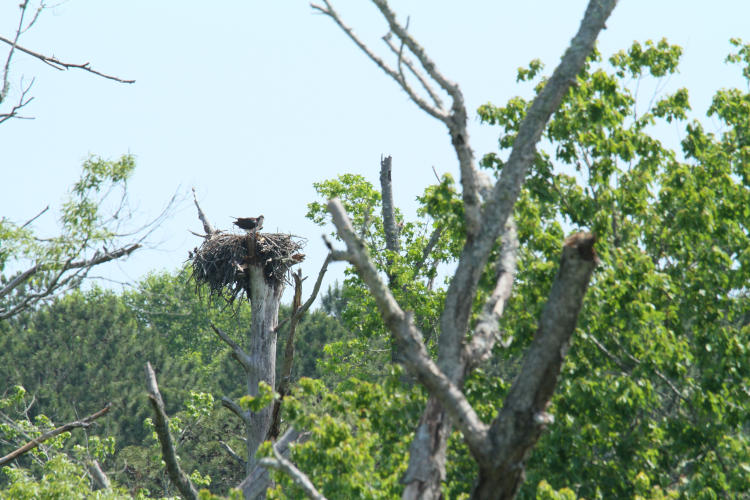
While out there, I checked out the area, finding two other nests visible from the same vantage, though considerably less ideal – this is full-frame at 600mm, so it would take the teleconverter just to see a little detail. Not worth a special trip, but it might be something I attempt while viewing the closer one.
So, no nice action shots of fishing birds or anything, but that’s seven species for the session (plus some sparrows and a nuthatch not shown here,) so I managed a little for the holiday at least. As long as we ignore being four days late…



















































